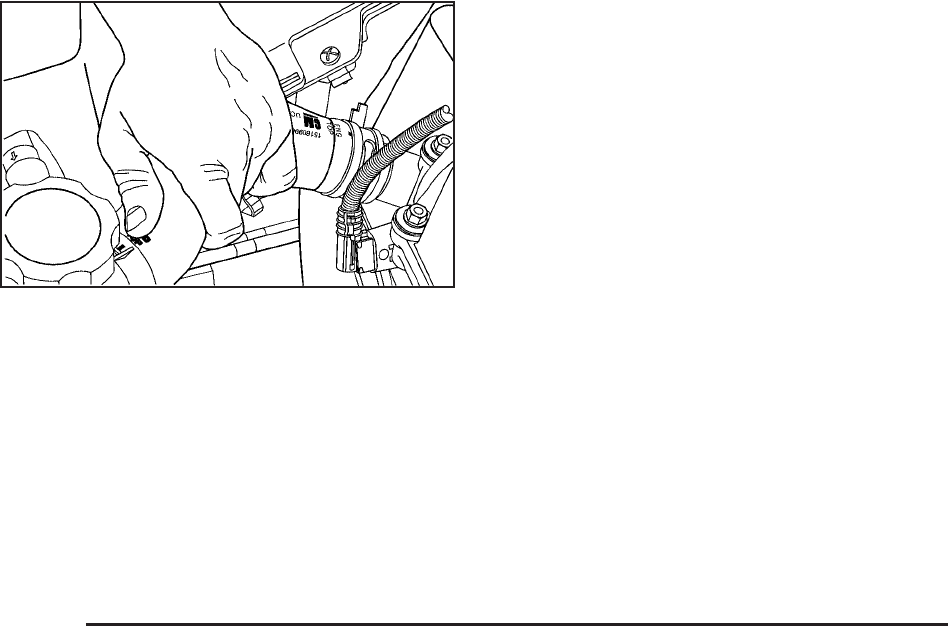
6. Start the engine and let it run until you can feel the
upper radiator hose getting hot. Watch out for the
engine cooling fan.
7. By this time, the coolant level inside the radiator filler
neck may be lower. If the level is lower, add more of
the proper DEX-COOL coolant mixture through the
filler neck until the level reaches the base of the
filler neck.
8. Then replace the pressure cap. At any time during
this procedure if coolant begins to flow out of the
filler neck, reinstall the pressure cap. Be sure
the pressure cap is hand-tight and fully seated.
Notice: If the pressure cap is not tightly installed,
coolant loss and possible engine damage may occur.
Be sure the cap is properly and tightly secured.
Radiator Pressure Cap
Notice: If the pressure cap is not tightly installed,
coolant loss and possible engine damage may occur.
Be sure the cap is properly and tightly secured.
See Engine Compartment Overview on page 5-12 for
information on location.
Engine Overheating
The vehicle has several indicators to warn of engine
overheating.
You will find a coolant temperature gage on the vehicle’s
instrument panel. See Engine Coolant Temperature
Gage on page 3-33 for more information.
If the vehicle has a Driver Information Center (DIC),
the display will show an Engine Coolant Hot/Engine
Overheated message. See DIC Warnings and Messages
on page 3-45 for more information.
5-34


















